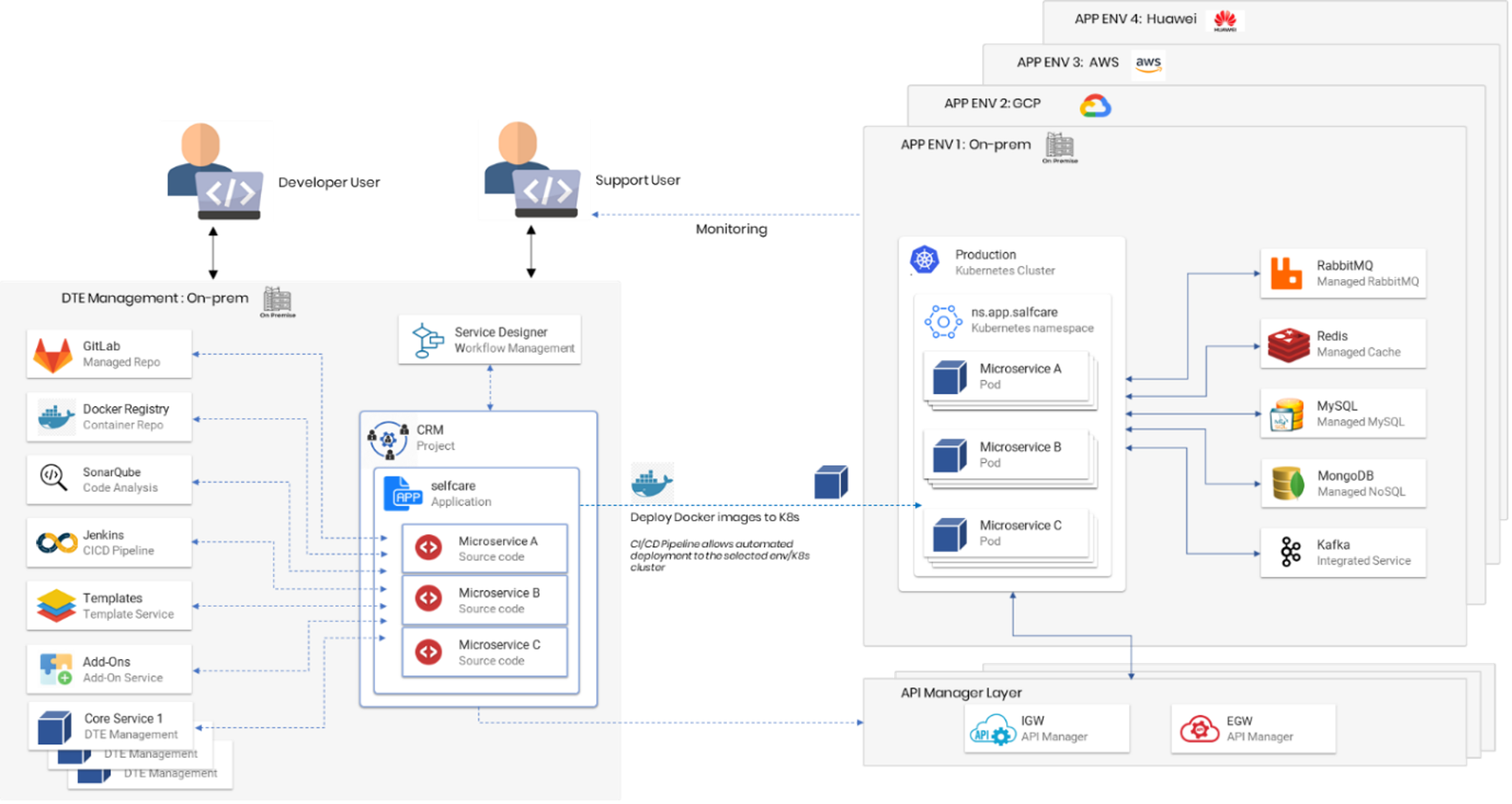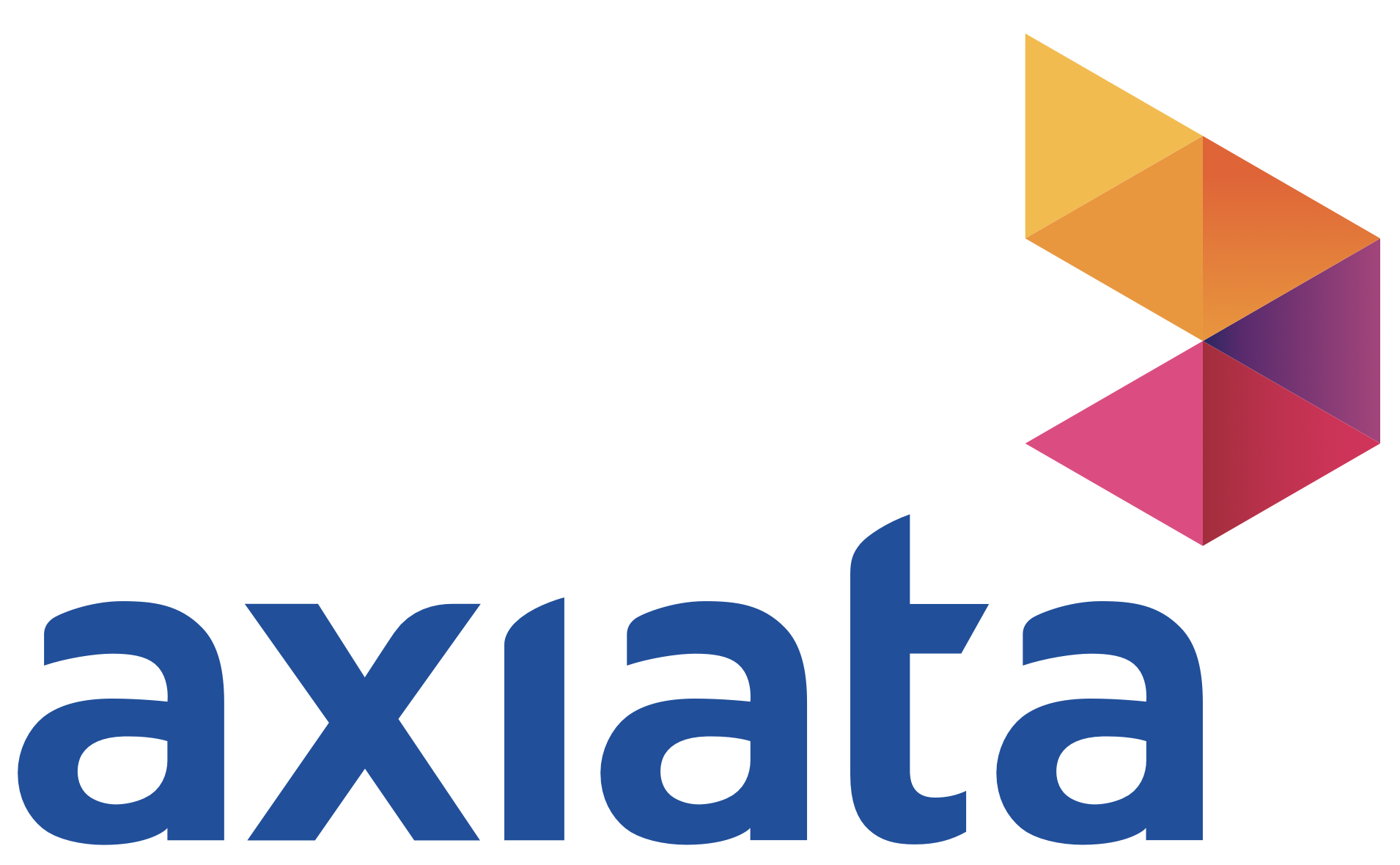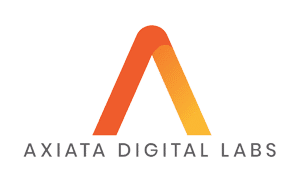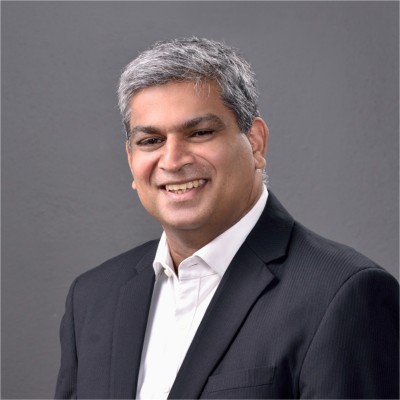Axiata Group is a leading telecommunications group in Asia with operations serving 350 million subscribers in 11 countries. The group’s OpCos faced challenges in migrating to the cloud due to the complexity of their legacy business support systems (BSS). Multiple cloud governance, compliance and security processes and existing structures lead to vendor lock-in and difficulty maintaining lean operations (LeanOps), from on-premises to multi-cloud solutions.
In 2019 and 2021, two Axiata operating companies, Robi in Bangladesh and Dialog in Sri Lanka, championed award-winning TM Forum Catalyst proofs of concept that included Axiata Digital Labs (ADL), the group’s technology hub, as a participant. Using the learnings from these projects and by aligning with the ODA and Open APIs, ADL created a digital enablement platform for hybrid cloud orchestration. It is a cloud-enabling, yet vendor-independent platform that ensures telcos can maximize resource utilization while gaining cloud technology advantages.
Axiata had several key objectives:
- Sustainability – infrastructure optimization and avoiding vendor (cloud provider or partner) lock-in
- Efficiency – eliminating complexities of integrations and aligning to complex organization structures
- Flexibility – in terms of scaling, seamless selection of the right cloud or on-premises capabilities and infrastructure
- LeanOps – single screen DevOps and monitoring for all environments (any cloud provider or on-premises)
Axonect hybrid cloud orchestration was initially deployed by Dialog Axiata to support the company’s migration of its billing systems to the latest version. The company had more than 100 legacy applications using proprietary communication protocols, so applications were required to make changes at the code level to support the latest billing platform.
To overcome the challenge, the orchestrator platform was deployed as a decoupling layer between third-party applications and Dialog’s new billing system to support more than 800 transactions per second. Then the platform was used to migrate several applications to the AWS cloud seamlessly using multi-cloud functionality. Following this successful implementation, the Axonect orchestrator was deployed at Celcom in Malaysia, Ncell in Nepal, and XL Axiata in Indonesia to support their digital transformation journeys.

Celcom’s transformation involved developing more than 1,000 microservices on a demanding timeline. The main concern was how to use Azure cloud capabilities for this rapid application development since there wasn’t a solution to integrate several deployment environments into a single CI/CD pipeline. The company used the orchestrator platform to integrate multiple cloud deployment environments as well as on-premises environments to expedite the deployment process so that developers can provision their microservices rapidly from one environment to another.
“Axonect Hybrid Cloud Orchestrator has enabled Celcom to embrace cutting-edge DevOps technologies to deploy hundreds of microservice-based components in multiple Azure cloud and on-prem environments,” says Dylan Lim, Architect, Celcom Axiata Berhad. “We have deployed more than 600ms in the on-prem K8S and cloud Azure Kubernetes Service – the number will keep growing from time to time according to our Celcom digital transformation.”
Ncell has used the platform to launch several critical applications, including a self-care app, fintech applications and a retailer app. Its main concern was that each application required its own deployment environment, which increased operational costs and time to market. The Axonect orchestrator was used to integrate Ncell’s monitoring platform with multiple applications and deployment environments and provide the operations team with a unified dashboard and experience. As a result, the company can maintain a unified view of the health of its services while also providing cost-effective operational support.
XL was dealing with performance issues in its existing applications, which were not able to scale dynamically to serve its huge base of 80 million subscribers. The stress on the systems was resulting in poor customer satisfaction, so the company turned to the Axonect multi-cloud orchestrator to migrate critical mediator applications to the GCP cloud, which addressed latency and dynamic scaling challenges. The orchestrator has enabled XL to develop applications independent of cloud providers, ensuring there is no vendor lock-in, and maintaining agility for moving workloads between clouds.
As illustrated above, the impact of the Axonect Hybrid Cloud Orchestrator has been measurable in terms of lower infrastructure costs and efficiency improvements. Infrastructure costs have gone down as the platform consolidates on-premises and cloud infrastructure and enable cloud-agnostic development. Selecting underlying infrastructure is as easy as clicking a button.
Cloud-agnostic app migration from on-premises to cloud or between clouds via the platform doesn’t require re-development, environment setup, monitoring integrations, reporting and dashboard changes, or network infrastructure changes. This has led to significant savings in time and effort when orchestration is done via the platform.
Other LeanOps efficiencies come from consolidating all infrastructure and applications into a single monitoring and DevOps screen, masking cloud-specific implementations and projecting a unified view for all operational tasks.
In future releases, Axonect Hybrid Cloud Orchestrator will enable OpCos to have access to real-time data unifying on-prem and cloud data sources for enhancing business simulations and optimizing operations. It will also facilitate end-to-end infrastructure management using a single screen via zero-touch provisioning with all major cloud providers.




